










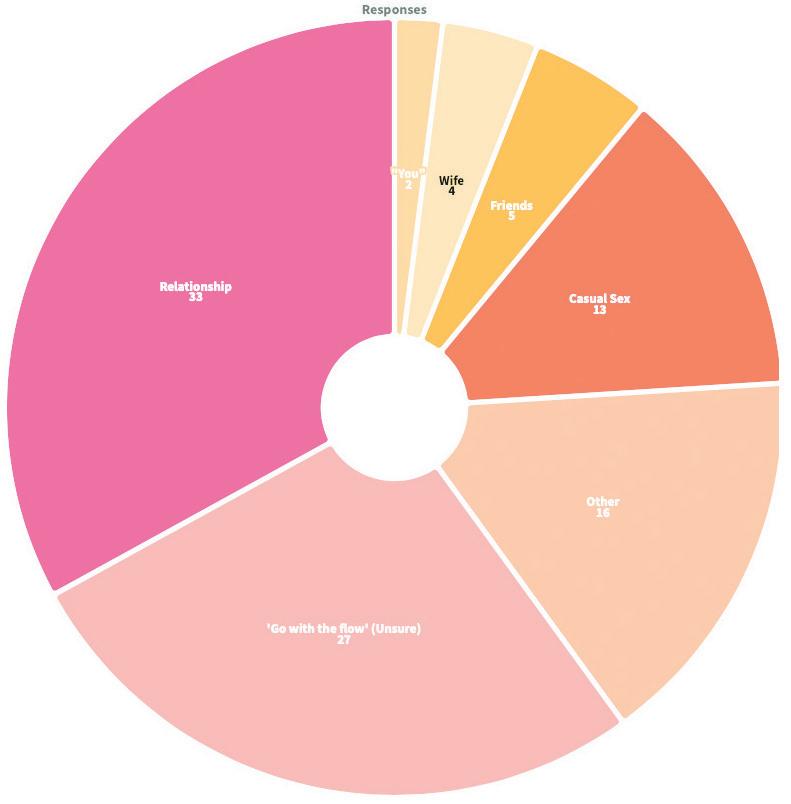 By Sonya Gugliara and Viola Flowers
By Sonya Gugliara and Viola Flowers
Ever wonder what the guy on Tinder’s real intentions are but are too afraid to ask? The Statesman did the work so you don’t have to. We matched with 100 guys on Tinder. Here’s what we found.
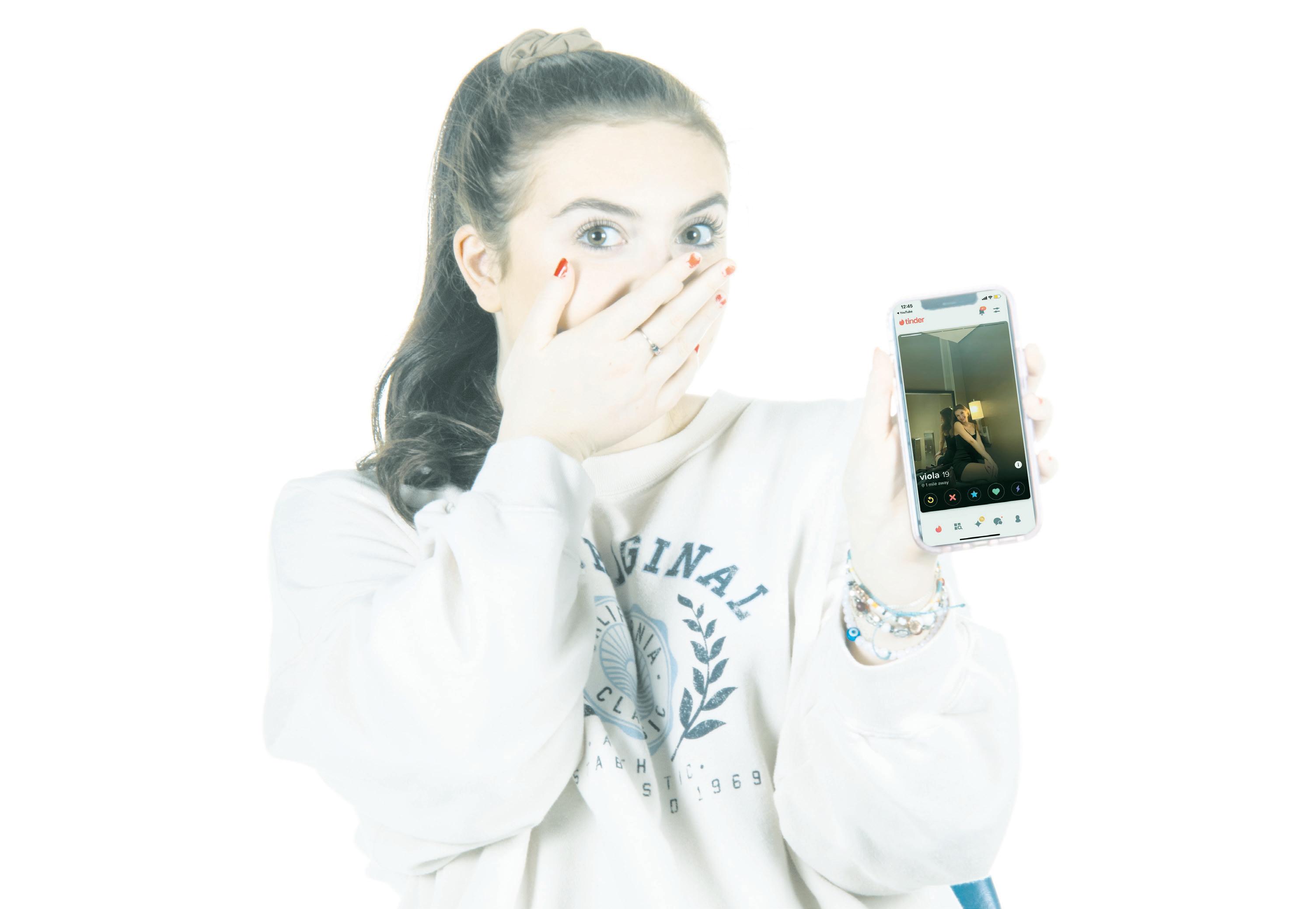
The method
The age range was set to 18-24, and the distance to 20 miles away.
And since we like playing hard to get, we only asked men who messaged us first.
We each created our Tinder profiles with five photos. Sonya’s interests were coffee, tea and world peace. Viola’s interests were reading, writing and coffee as well. We added our education level, zodiac signs (Scorpio and Cancer, respectively) and a few of our interests. We were both “still figuring out” what we were looking for.
We turned on the “Smart Photos” feature, meaning the app would test each of our photos and select the best one to put first. We also blocked all of our contacts, but somehow a few familiar faces still popped up in our decks.
Our matches knew what they were getting into; Journalism 101 taught us that transparency is key. Sonya’s bio was
“Aspiring journalist, can you help me with an article (seriously)” and Viola’s was “Wanna help me with an article?”
In the name of uncompromised journalism, we stopped entertaining conversations after we got our answers. No time to waste — even though we’re both single, The Statesman has our hearts.
The suitors were asked a series of four questions: what are you looking for; why did you swipe right on me; what do you have to offer; and what is your ideal first date.
Over the course of four days, and out of over 250 matches, we found 100 eligible bachelors who made it through all four rounds of questioning. We compiled some data for you all to consider before you dive into the world of Tinder, as well as some of our favorite lines.
The results
Question 1: What are you looking for?
Much to our surprise, a third of our men were looking for true love on Tinder. In typical male fashion, 27% weren’t sure what they wanted, but 13% were honest enough to tell us they were just here for the sex.
Obviously, if love is easy, you’re doing it wrong. Here are some of the obstacles we overcame during this quest for romance.
Sonya kept matching with far older men “by accident.” But we know where her head’s at.
The Tinder algorithm also couldn’t keep our men local to us, with about a third being out of our preferred 20 miles range. Perhaps it’s a sign that soulmates are worth the distance?
We almost had to add a new data point: how many athletes matched with Viola?

Finally, many participants did not take our honesty at face value and questioned the legitimacy of this article. To the men who doubted us, we’ll be sending you this link. Thank you for your contribution!
To give everyone an idea of our Tinder experience to its fullest extent, we knew we had to share our honorable mentions. Here are some tid-bits from our brief, but meaningful, Tinder conversations. Although these remarks had no impact on our data, they certainly made an impact on our hearts.
One user thought he could get Viola on a date by role-playing a reporter with, “Lets go out and i’ll write you an article.” Fine, but we won’t copy edit it for you.
Another match proved his unwavering patriotism to Sonya in his opening line: “On a scale of 1-America how free are you tonight?” We have to give him points for creativity. Titles for this article were also suggested to us, one being “The sexy man I met off Tinder.” We love the self confidence and all, but journalists don’t play favorites.
Question 2: Why did you swipe right on me?
The top reason men swiped on us were for our eyes and smile — how wholesome. After that, we had a variety of thoughtful answers, ranging from cute, beautiful and pretty all the way to attractive! Some of our suitors were turned on by journalism, while a few others had a thing for Sonya’s glasses (kinky?).
Question 3: What do you have to offer? What are your best qualities?
The good news is that you’ll probably end up matching with a comedian on Tinder. The top quality men said they have is being “funny,” with other high-ranking traits being loyal, kind and honest. Notice “humble” didn’t make the list.
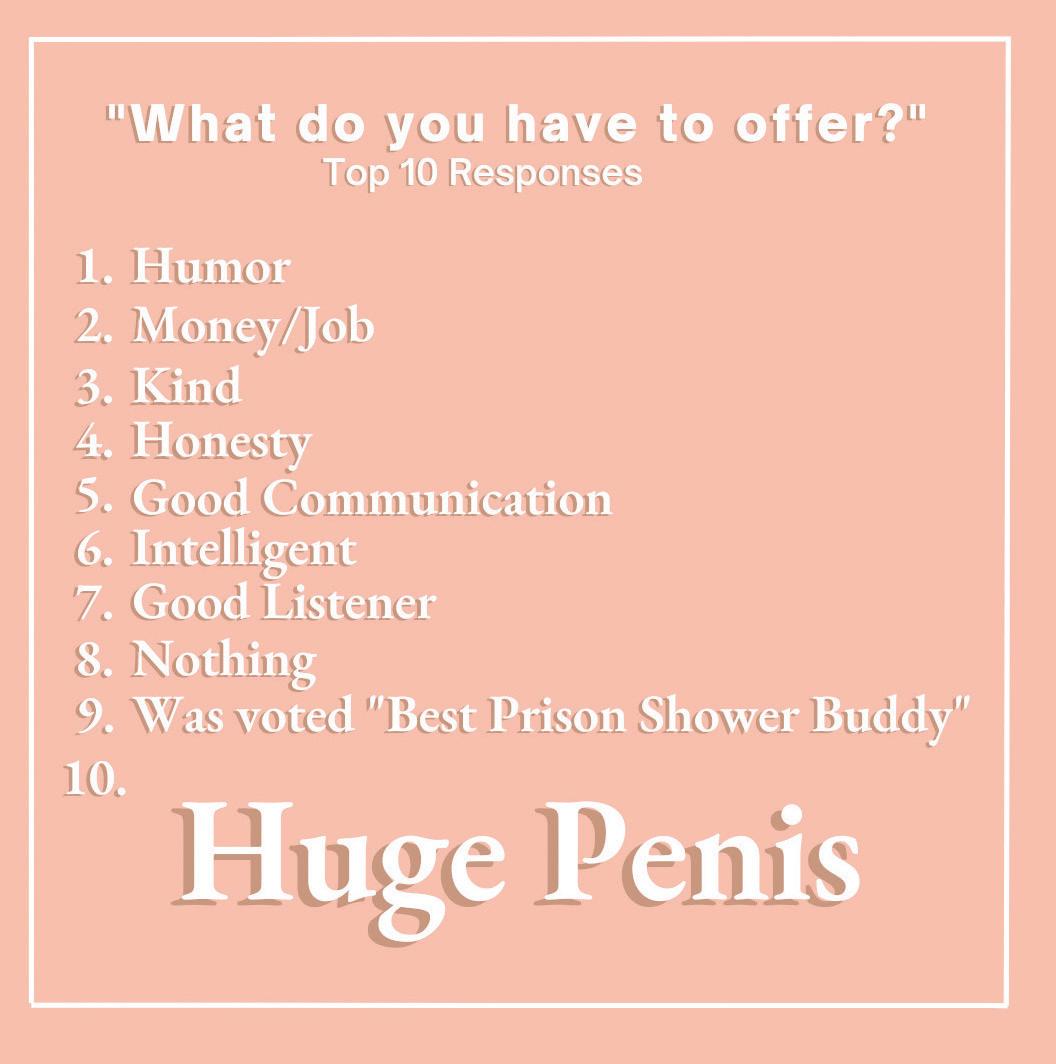
Question 4: What’s your ideal first date?
Asking about our matches’ ideal first dates proved that these men could use a few lessons in originality. Going out to eat was the go-to first date for 44% of our Tinder matches. One guy even specified a dive bar barbecue place, because “If a girl isn’t afraid to eat messy food, then she’s a little more real.”

Another user thought boldness was the way to go (it wasn’t), saying to Sonya “You must be here for the free t***y massage.” Thanks, but no.
And they say chivalry is dead.
Conclusion
We were never fans of dating apps — and nothing has changed.
Both of us were surprised that most of the responses we received were pretty tame, but the Hawthorne effect is real. How many of these men altered their responses because they knew they were being documented?
Regardless of if they were honest or just putting on their best “nice guy” performance, neither of us have any faith that our soulmates will be found on Tinder.
But we aren’t giving up hope. Perhaps Christian Mingle next time? We heard Hinge is classy, too.
In the midst of a loneliness epidemic, I joined the 52% of Americans who reported feeling isolated. The depth of pure emotion that follows the feeling of loneliness is hard to describe in words, but it’s as if someone dropped you into a never-ending pool with a cinderblock tied to your foot.
During the second lockdown back in 2021, as the Omicron variant of COVID-19 spread throughout the country, I began to experience the effects of loneliness. Going back to university for the first time in two years, not only was I older than all of my peers, but I felt the immense distance between us. I was a social butterfly throughout high school and my brief stint in college, but attempting to forge new friendships felt like an impossible task.
The ultimate blow to my confidence in my social skills was necessary but painful. I hadn’t seen my high school friends for a few years due to my neglect in our relationships and my inability to be a good friend. At this point, I had tried to rekindle our relationship by stating my regrets and apologizing for my actions, but little came of this.
The last time I saw any of them was at a funeral.
Mourning a person I had previously been close with had been hard, but I was most fearful of having to face my old friends — seeing them in person made the guilt I had palpable. Greeting them at the funeral parlor was symbolic of the definitive ending to our relationship. We hugged briefly, and I stated how I had missed them. The long pause before stating they had missed me too made it clear to me that there was no salvaging what had once been there.
To this day, if I think about them for more than a second, the depth of pain that follows reminds me of what was lost.
Relationships are vital to human development and for our mental health. While some may be able to survive isolation or perhaps prefer it, it’s been bred into us for our survival.
In fact, social interaction is so important that according to one study published in the Journal of Health and Social Behavior, the risk of death among individuals with little to no social ties was twice as high as those with the most social ties. Having community or social ties provides a level of protection against a wide variety of diseases. Positive social ties influence positive health behaviors and a lack of relationships may cause an individual to participate in risky behaviors that could lead to accidental death or suicide.
Isolation is a slow death. As I mourned the loss of my friends, I lost the ability to put myself out there. I dwelled on my previous negative decisions and began to believe that I would continue to hurt those around me. The other friends I had lost along the way were a byproduct of growing up and apart.
Now I was starting back at square one and suddenly at a loss for what it meant to be me.
Looking around the university classroom at my younger peers, I found myself mute. How does a person start a conversation? How do I make myself interesting? It was a heavy transaction: a line of dialogue for a connecting thread.
However, isolation may not simply be the absence of all relationships. Sometimes, having people around you doesn’t release you from the shackles of loneliness. Being unable to comprehend what it means to be a good friend or a good person can leave a person feeling isolated from themselves. As if the curtain was pulled down, I came to a point where I’d rather mindlessly scroll through my social media apps than establish a connection between me and my conscious self.
The work I later put into myself allowed me to become confident in my ability to socialize. Once I took a serious look at my faults and decided that I wanted to become the best version of myself, my ability to establish connections became easier.
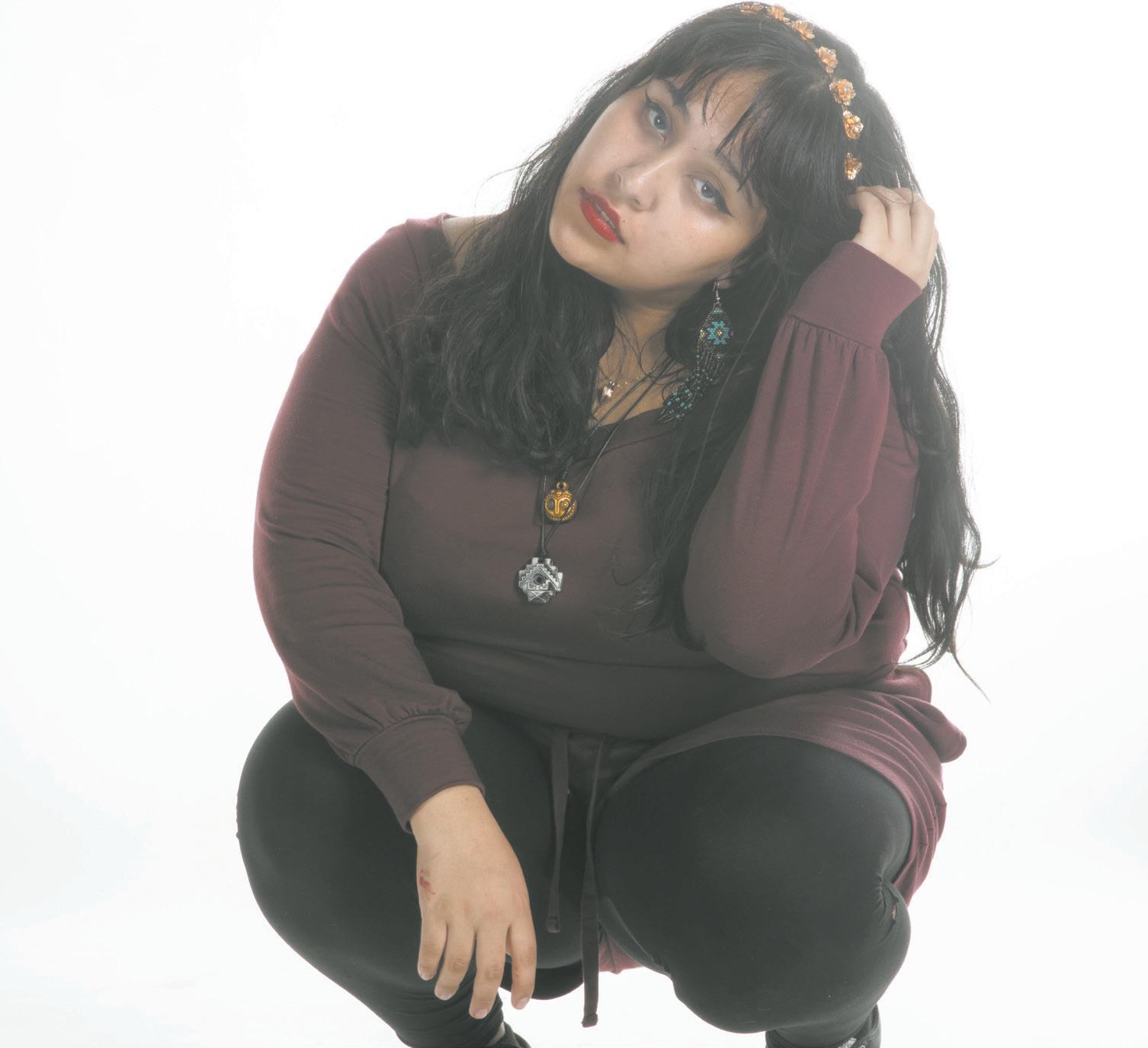
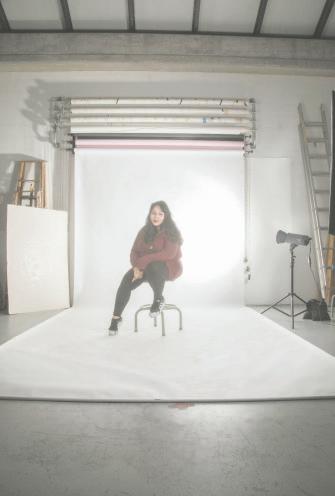
I had to forgive myself to love myself. With that, the loneliness and guilt became easier to handle.
Relationships define us. Whether it’s the people around us that give us the pieces to craft our personalities, the groups we can express ourselves in, the self-love we give ourselves or the people who love the parts of us we deem undesirable. Without these connections, we are nothing more than husks of ourselves.
Putting ourselves out there is incredibly important in this age of screens and images. I had to fight my fears to get out of my comfort zone. No matter what environment I put myself in, I did my best to get to know people and encourage a meaningful connection. The fear held me back, but the desire to feel alive pushed me to try to make new friends.
The implications of loneliness are profound. My own experience proved to me that while an individual is capable of pulling themselves out of a rut, it’s a euphoric feeling to have your own community that can help put the pieces back together.
For the sake of our happiness, our connections with others and ourselves are vital.
Anya Marquardt is a senior English Education major and journalism minor.
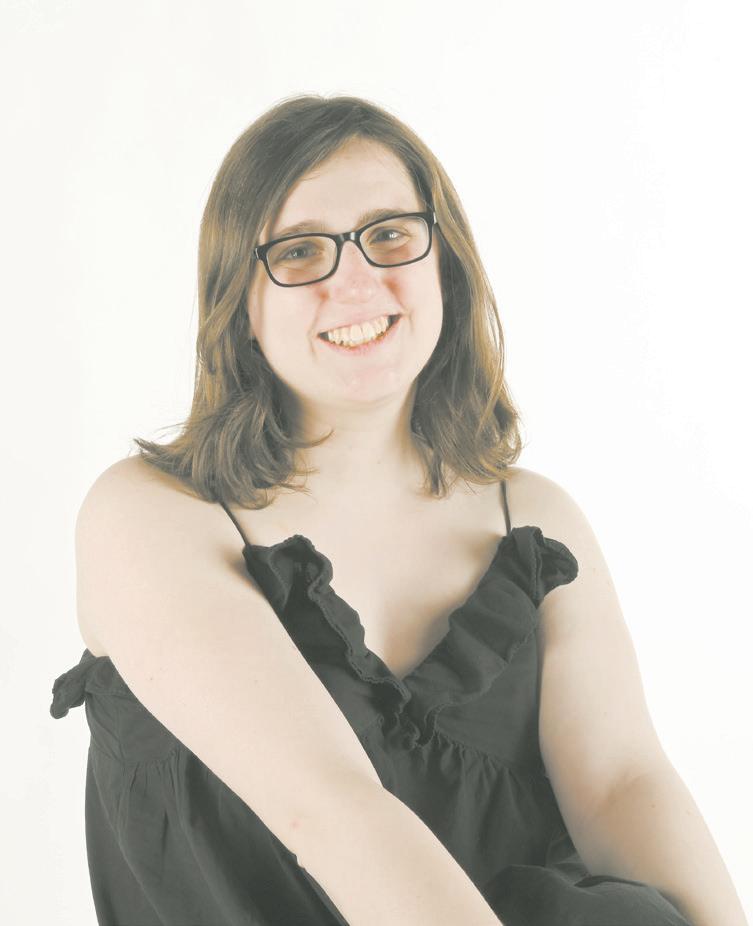
I wasn’t shown a condom in school until my senior year at a mandatory meeting for students attending prom. Yes, I knew what a condom was — but only from the internet. I got the whole “birds and the bees” conversation from my parents. But I didn’t receive much of a sex education from my own school, and I’m not the only one.
Sex education in public schools isn’t nationally mandated — only 39 states currently mandate sex and/or HIV education. Even in states with mandated sex education, the age at which and extent to which it is taught is usually left up to individual school districts. And, even in the districts that do teach sex education, they often leave out an already-marginalized population: queer youth.
Hundreds upon hundreds of studies have proven that sex education can reduce teen pregnancy, decrease the spread of STDs and repel common myths and misinformation about sex and sex-related topics. With a 15.4% teen pregnancy rate, sex education is clearly needed in this country.
According to the Gay, Lesbian & Straight Education Network’s (GLSEN) National
School Climate Survey, only 8.2% of students who had some type of sex education in school reported that it was LGBTQ+ inclusive. The furthest my school went was discussing the prominence of HIV diagnoses in gay men. And, let’s be honest — that’s probably the most that many people know about queer sex.
A study conducted by the Human Rights Campaign yielded important results to show the lack of useful sexual health information for queer students. The study looked at online searches in the categories of ‘Sexuality or Sexual Attraction,’ ‘Health or Medical Information’ and ‘HIV/AIDS and STIs.’ The percentage of queer youth searching in these categories was at least double that of non-queer youth. Unfortunately, this confirms that it is more likely for queer youth to receive health information that is both inaccurate and nonage appropriate compared to non-LGBTQ+ youth. With a lack of resources available for them in the classroom, this population feels as if they are left with no choice but to scour the internet for answers.
Queer students are suffering. Books with any mention of the LGBTQ+ community are being banned throughout the United States. Access to healthcare for
transgender youth is under attack, with 22 states introducing bills to ban healthcare for trans youth in 2021 alone.
A new survey conducted by the Centers for Disease Control and Prevention (CDC) revealed that LGBTQ+ identifying students are among those experiencing the highest levels of violence and distress. Queer kids are bombarded with a narrative that something is “wrong” with them, that they don’t belong. That they lack basic humanity.
There are adults in the educational environment who are working to make the classroom a safe space for queer students, but we’re leaving out an integral part of their identities if we aren’t fighting for inclusive sex education to be a part of it. If they cannot see themselves in conversations about sexual health and identity, how are they supposed to feel supported?
The CDC’s webpage for Sexual Health Education states that one of the characteristics of quality sexual health education programs is to “address the health needs of all students, including the needs of lesbian, gay, transgender, and questioning youth.” On the CDC’s Health Education Curriculum Analysis Tool, all general curricula outlines include a
checklist, with one question specifically asking if the needs of all marginalized populations have been addressed, including children of color and LGBTQ+ youth.
The guidelines and resources are there to be used, and can be easily adapted. And, those resources make a crucial point — quality sex education is inclusive sex education. We aren’t providing the best research and highest quality education to our students if we refuse to venture past heterosexual sex education.
Sex education needs to function as a space for students to both explore and understand sexuality and gender identity. This should be the space to expose students to positive portrayals of LGBTQ+ relationships and dispel harmful stereotypes that help manifest stereotypes and homophobia.
Queer students deserve to have a safe space to learn about themselves and to feel seen. We cannot “choose” to fight for inclusion in some aspects of education and not fight for inclusivity in others. A well-rounded education is a quality education, and an inclusive queer sex education experience for all students can help us fight misinformation, strengthen confidence and keep our students safe and well-informed.
Christine Kelley is a senior journalism major.
My great-grandmother was named Willie Mae McBride, and yes, she was from Georgia. At some point in her youth, she jumped from her small, rural hometown to the industrial Midwestern giant of Cleveland. I think I only met her once, when I was too young to form conscious memories of her. But everyone in the family spoke kindly of her: the only relative who everybody liked, who provided a sense of community.
I grew up looking at photos of Grandma Willie. She always had a warm smile, like she’d seen what the world had to offer her and made peace with it. In recent years, I haven’t had any pictures of Grandma Willie. That warm smile was lost to me, or at the very least, I could only access it as a memory.
My other connection to Grandma Willie is my upbringing in American Southern culture. When I was a child, I lived in a series of small
towns in Virginia and West Virginia. I won’t pretend those towns couldn’t be reactionary — they were mostly white dynasties whose ancestors broke bread with Robert E. Lee (who, incidentally, is a third cousin of mine). Even Grandma Willie was hardly exempt; her ancestors owned plantations and fought for the Confederacy. That culture remains in the South. A stranger from out-of-town walking down the street can elicit strange looks from the locals. Yet there was also a sense of community that doesn’t exist in suburbs or universities. In rural small towns, people are more likely not to just know their neighbors, but to offer them help whenever they need it. Your car won’t start? Someone down the road will jump-start it. It’s your kid’s birthday? The old man who runs the campground will give her a toolbox as a thoughtful gift. Family barbecue? Your friends from work are family too, so they can come enjoy brisket, corn on the cob and your brothers’ banjo-playing in the garage.
Yet at my core, I knew I wasn’t safe. I knew on some level that I was queer, even transgender. Coming to terms with my queerness in that environment was the most difficult thing I’ve ever done. The first time I considered that I might be transgender, I sat in the shower in utter despair, knowing I could never live as myself in my environment.
So I pushed it aside. I forced myself to forget who I was for months. I continued to live in the prison of the name I was given at birth.
Then I met my adopted mother — my real mother. We became acquainted online, and she quickly caught onto what I was going through. She made an offer: She’d drive down to Virginia, take me to Ithaca, N.Y., where she lived, set me up at the local community college, help me transition and assist me in starting a new life.
I took her up on that. Over the course of a day, I came out to everyone, moved to New York and started my life over.
When I moved to upstate New York, I was surprised to find aspects of Southern culture mirrored by my new surroundings. It wasn’t just the green rolling hills that reminded me of the Blue Ridge Mountains and Shenandoah Valley. It was the way small communities would band together and help each other out.
And I sure needed help. I had just come out and fled my home state. The family I grew up with was mostly out of my life. What minimal sense of community I’d had growing up was utterly shattered by the harsh realities of coming out to an abusive and reactionary family, and they didn’t offer me nearly as much as neighbors and local townspeople did either. I didn’t just need a new family — I needed new ways to have a community.
I found my new community in Ithaca, but in profoundly different forms than I ever saw back home. For one thing, the racially diverse, exquisitely queer and near-endemically non-monogamous community of left-wing activists I met in Ithaca were a million miles outside of my experience of Southern living. Ithaca, a progressive, small-ish town in the Finger Lakes, brings together local farming
and the college-town atmosphere of Cornell University. There was a more diverse spread of people than I ever saw in Charles Town, West Virginia. Through them, I joined a community with more powerful ideas than I’d heard growing up.
In Ithaca, I discovered that there was a name for the ideas of community I’d admired all my life. The local activists practiced mutual aid, a long-standing practice in which communities provide each other with living necessities and resources without governmental oversight. Russian anarchist Peter Kropotkin popularized the idea of mutual aid in the early 20th century, and it’s remained a staple of leftist political organizing ever since.
It was mutual aid that finally helped me reconcile my Southern upbringing with my leftist politics. But more importantly, I found that ethos through my found family. My mother who rescued me legally adopted me when I was 22 years old, making me the child of multiple polyamorous queer parents. I learned my values of community through this strange new type of family.
I could be both a polyamorous bisexual trans woman with anarcho-communist politics and a Southern belle who liked feeding people. I needed both, and I got both. In one fell swoop, I got to emulate Grandma Willie and my new mother while also being myself. If I didn’t embrace my queerness, polyamory and leftist politics, I’d be lost. But I need that Southern past to ground me as well. That’s roughly what community does; it bridges your past and your present.
 By Skylar Sena
By Skylar Sena
It’s no secret that there are literature snobs everywhere, from the desk next to you in a lecture hall all the way to the messy world of online discourse; and of course, they make their opinions heard. Especially in recent years, with books like Colleen Hoover’s “Ugly Love” gaining traction on TikTok and in many bookish communities, smutty books have entered the literature conversation — and they deserve to.
Smutty romance novels, or novels that are sexual in nature, are often less respected than other forms of literature. Sure, E.L. James’ “50 Shades of Grey” may have given the genre a bad rap, but it certainly isn’t representative of smut as a whole. One series that has redeemed the genre for readers on TikTok is Elle Kennedy’s “Off-Campus.” To celebrate the newly-appreciated role of smut in modern online culture, we’ll rank the series’ novels later on.
While the writing of many of these books — the “Off-Campus” series included — isn’t of Shakespearean quality, it doesn’t need to be to offer a great story. In fact, these stories must be appealing, since TikTok book recommendation videos that contain tags like #SmutRecs have garnered more than 138 million views.
So why does smut get this type of global internet attention? Because they’re the books that are written for women, by women.
When it comes to sexual media, pornography is often the most prevalent; and yet, it isn’t as enjoyable for women looking for erotic material as it is for men. A 2015 study by the Journal of Sex Research found that in pornographic material, women were more likely to be used as sex objects than men, had more facial close-ups and received more sexual violence, which is rarely met with negative reactions. This is likely because of the gender of those who create pornography; the porn industry tends to be male-dominated, particularly in the areas of writing, directing and producing.

The smut industry represents a stark contrast to its visual counterpart. Duke University’s Unsuitable publication notes that 84% of romance readers are female, as are the vast majority of romance writers. Smut content is inherently directed towards women, as those who create it are crafting their stories in such a way that it caters to “the female gaze” — a term to describe content that caters to the romantic or sexual ideals of women.
Additionally, the narratives offered by smutty novels achieve more than just detailing erotic scenes of the chains and whips Rihanna taught us about back in 2010. It has been noted that smut can guide readers through their own sexual discovery and allow them
adventures in their own sexuality, which they may not be able to find in less niche media. Because of the versatility of smut — spicy scenes can be set anywhere from a college football locker room to a magical forest — readers can delve deeper into their own preferences and fantasies, as well as strengthen sexual confidence both for themselves and their romantic encounters.
These books want readers to feel seen and heard, and explore new ideas either pertaining to themselves or their communities. Smut gives readers an escape from a world they may not feel fits them. Smut inspires — just like any great novel should.
In honor of smut’s well-deserved place in the modern literature world, let’s rank the novels of one of TikTok’s favorite smut series, “Off-Campus.” The set of four novels is dedicated to the lives — and spicy sexual exploits — of a group of college hockey players at the fictional Briar University. And, yes, there is a fifth book that serves as a sort of epilogue for the series, but it simply doesn’t compare.
4. “The Goal”
In this political climate, the accidental pregnancy trope feels more like a genuine concern than a fun surprise — and for anyone looking to escape reality and find sexual pleasure in their smut, this novel might not do the trick. However, when Sabrina, the uptight, incredibly sassy pre-law student gets together with tender Tucker, who only wants to break down her walls, it’s a perfect match. Kennedy’s affinity for “sexy alpha heroines” only makes this book better.
3. “The Mistake”
When Logan leads on and dumps the shy, beautiful Grace just to be met with inescapable regret, it can make this novel’s title feel a bit on the nose, and the storyline a bit predictable. The plot may seem a little dry, but the intimate scenes certainly don’t. With Logan’s untamable desire to do anything to win back Grace’s love, you can only imagine what spicy scenes lead up to the climax (no pun intended). A run-of-the-mill mid-series novel that works as a standalone, “The Mistake” is a great quick read to get any reader out of a slump.
2. “The Score”
The spiciest of the whole series, Allie and Dean’s story is as carnal as it is captivating. The “we shouldn’t” trope works well here, as the endless pining of known ladies’ man Dean and freshly-broken-up-with Allie makes for a tension-filled story that flows effortlessly. The plot of finding oneself and following one’s dreams — and how it can complicate a relationship — only adds to this already-compelling piece, complete
with sexploits in every room of a New York City penthouse.
1. “The Deal”

As the first book in the series, perhaps it simply holds a special place in the hearts of smut readers everywhere. But the story of Garrett, the incredibly popular and charismatic team captain, and Hannah, the shy singer with a traumatic past, is too hard to deny. It certainly doesn’t hurt that the fake dating trope, a fan favorite, weasels its way into the novel as well. The book’s careful balance between spicy sex scenes and compelling plotlines makes for a perfect romance story that’s impossible to put down.
Now, these novels are far from perfect. Eyebrow-raising jokes, tropes and cliches are bound to make their way in, as they are with any novel; authors are human, too. But for smut, perfection is never the goal — just pleasure.
Pleasure is at the heart of all literature, whether it’s being read for information, inspiration or entertainment. Clearly, smut is no exception. Smut has the literary values of connection and provocation at its very core, and just like the oft-revered poetics of Shakespeare and Homer, it simply hopes to tell a good story — only with a little extra spice.
Copy Chief Skylar Sena passionately displays her love for spicy literature. Smut captivates readers with stories like no other. TIM GIORLANDO/THE STATESMANContent Warning: Domestic violence, sexual assault
Colleen Hoover’s “It Ends with Us” is currently ranked fourth on the New York Times bestseller list. As of March 20, the book is entering its 91st week on the bestseller list. The 2016 romance novel has gained immense popularity since 2021, primarily through TikTok under the “#BookTok” hashtag. The novel is critically acclaimed for its touching themes and even won Best Romance on Goodreads in 2016.
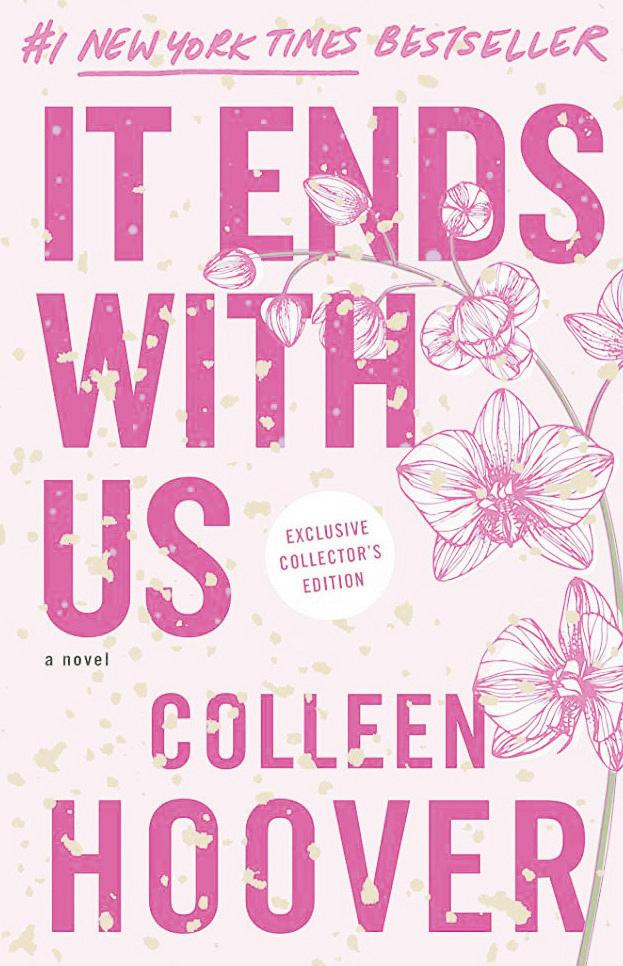
While the novel is marketed as a romance novel and continues to be praised, its erroneous portrayal of intimate partner violence (IPV) renders it downright dangerous to be classified as such, as Hoover’s attempt at a cautionary tale falls flat.
The book’s romantic plotline is a love triangle between characters Lily, her new flame Ryle and Atlas, her ex-boyfriend from high school. It seems like a classical romance novel with cute tropes. However, that couldn’t be further from the truth.
The portrayal of Ryle’s behaviors is not only alarming, but dangerous. It should not be represented in a romance novel, as it can tie coercion and abuse to a form of romance for some readers. Red flags in Ryle’s character appear the second he encounters Lily at her flower shop, six months after their first meeting. He overtly sexualizes her and expresses his desire to sleep with her.
When Lily repeatedly refuses his advances, Ryle hunts down her apartment to convince her to have sex with him, emphasizing that it will be a one-time occurrence. It was never going to be a one night stand, and this simply was not consent.
Men who use the promise of a “one-time occurrence” to manipulate their partners to have sex with them do so to alleviate the other person’s concerns over the situation. However, these men often have no intention of making it a one-time occurrence, and will continue to pressure their partner for more sex. Ryle repeatedly asked and pressured Lily to have sex with him and it created a situation in which Lily felt that she had no choice but to give in.
From there, it just gets worse.
During their relationship, Ryle often physically abuses Lily and continues to sexually assault her. It starts with remorse from Ryle and
unfulfilled promises of never touching Lily again — and then it escalates. Despite Lily suffering from cuts and bruises, the novelist appears to justify Ryle’s violent tendencies by having him explain that he blacks out during the fits of rage and doesn’t remember hurting Lily because of his traumatic past.
Trauma is absolutely not an excuse for physically abusing someone.
“When Ryle was three years old, he shot his brother. This detail is also added seemingly out of nowhere,” student contributors at the Ram Pages, a student-led newspaper in Philadelphia, write. “The problem with this is that this information doesn’t correlate at all with why Ryle was so abusive towards Lily.”
When readers begin to sympathize with an abuser, they may overlook or minimize the harm that the victim is experiencing, which can create the false notion that abuse is acceptable or even romantic in some way. A study conducted in 2021 by sociology professors Samatha M. Gavin and Nathan E. Kruis found that depiction of violence against women in the media, especially in romantic relationships, can contribute to increased acceptance of domestic violence.
Additionally, we can easily see that Ryle’s attacks on Lily are not “episodes.” In a third incident, Ryle finds out that a magnet on Lily’s kitchen fridge was gifted to her by Atlas. This enrages him, and he proceeds to wait for Lily in the dark of her apartment while holding the magnet. When she comes
home, Ryle forces himself on Lily and aggressively pulls her hair, ignoring her cries to stop.
Ryle responds by choking her and attempting to rape her, which leaves her unconscious and with multiple physical injuries. This is not Ryle acting in a spell of rage. It’s a sadistic and calculated assault on Lily. Still, Hoover writes Ryle’s trauma in a way that may lead to readers perceiving it as a justifiable excuse for his outbursts.
“There are things I can’t control. I get angry. I black out,” Ryle says to Lily after another incident where he pushes her down a flight of stairs. “I swear I had no intention of hurting you.”
Through this, Hoover conveys that while the abuse is not acceptable, it is understandable, causing some readers to sympathize with the abuser. The underdeveloped character of Atlas also leads the reader to place Atlas and Ryle on the same level of being an appropriate suitor for Lily, despite Ryle’s abuse.
“Indeed [the book] has its moments through small infiltrations about a victim’s mentality in an abusive household,” Kate Ng, a writer at The Daily Nebraskan writes. “But, that is mostly offset by the strangely Hallmark-loving tone the entire duology decides to take, making the books sound humorous and benign in a way that domestic abuse is not.”

Hoover constructs Ryle to be the perfect man, his abusive behaviors aside, and writes in swoon-worthy moments between him and Lily. This breeds butterfly sensations in not only Lily, but in readers as well, especially for the moment when Ryle confidently professed himself as Lily’s boyfriend.
By Jenna ZazaOne user on TikTok posted a video captioned “[I’m] Team Ryle, because I can‘t hate him even [if] he did [abuse] Lily.” Another reader on TikTok said that she would’ve stayed with Ryle, and that his trauma was an “excuse” for his behavior.
By the end of the book, Lily decides to separate from Ryle after learning she is pregnant, thus ending the cycle of violence. But what would have been a celebratory end to a truly horrible relationship is ruined by a redemptive scene in the epilogue. Lily allows Ryle, with a history of abusing and victimizing women, to co-parent their child, claiming that each parent has to work through their differences — except that Ryle is not a good person with so-called “differences.”
He’s an abusive manipulator, and allowing an abuser to co-parent can put the safety and well-being of both the child and the victim at risk.
The book is marketed as an “unforgettable tale of love,” and the back cover claims that “sometimes the one who loves you is the one who hurts you the most.” Hoover, through her unrealistic and overly sympathetic portrayal of an abuser, misses an opportunity to show the toxicity within abusive relationships.
The absence of IPV trigger warnings and the marketing of this book as a romance novel are extremely misleading and can lead to normalizing domestic violence. Romance novels are characterized by themes of love, passion and emotional connection, and “It Ends with Us” offers none of that.
The marketing of this book as a romance novel can trivialize the serious and damaging effects of domestic violence and sexual assault, reducing them to a plot device rather than a complex issue that impacts more than 10 million individuals in the U.S.
Hoover ultimately fails in her attempt to raise awareness of IPV. The misleading marketing, the use of Ryle’s trauma to justify his abuse and the redemptive scene in the epilogue send a message that sexual assault and domestic violence can be justified — and are on some level acceptable. If people are going to be promoting this book, they should be cognizant of the IPV and explicitly warn people that this is not a romance book.







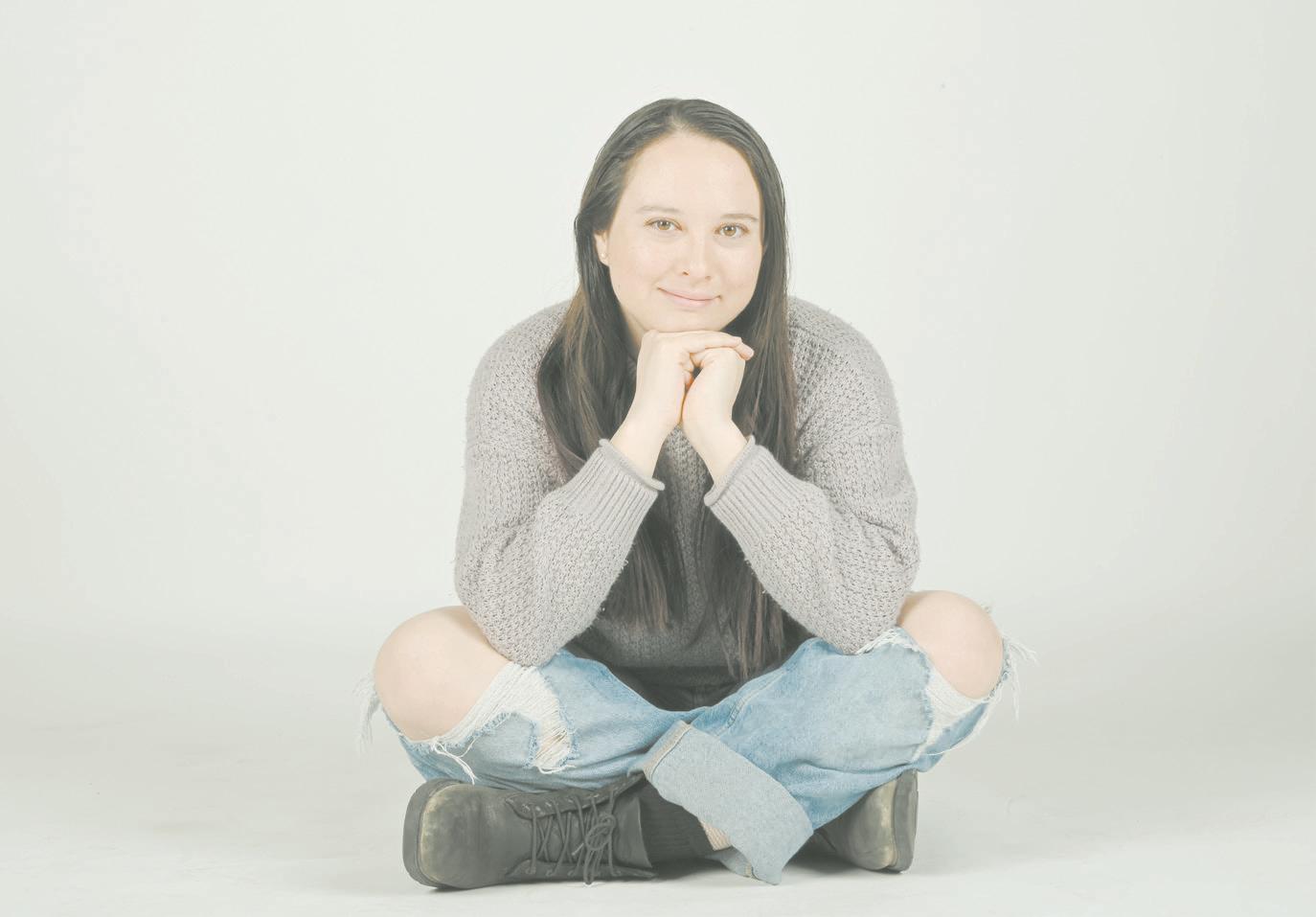
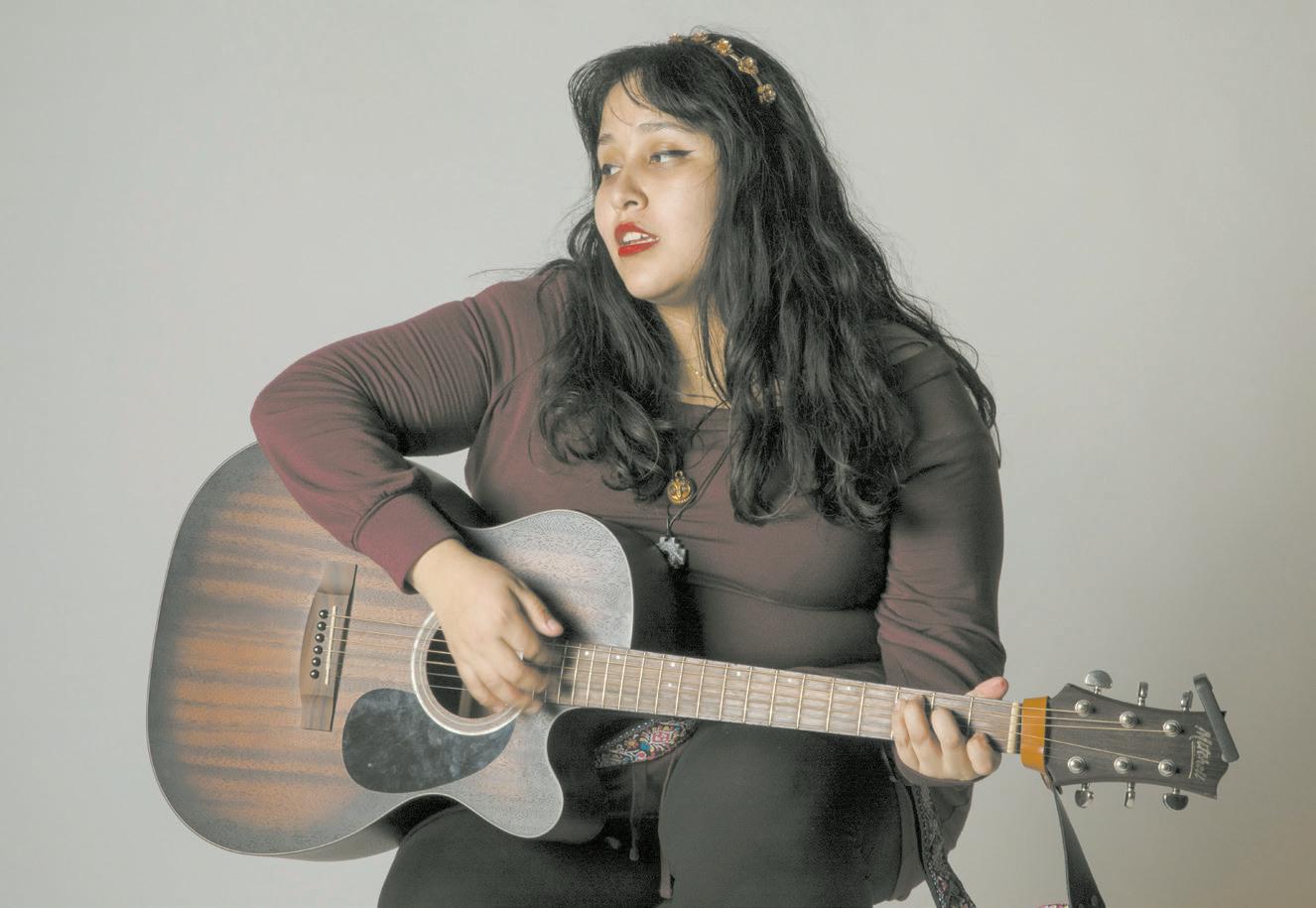
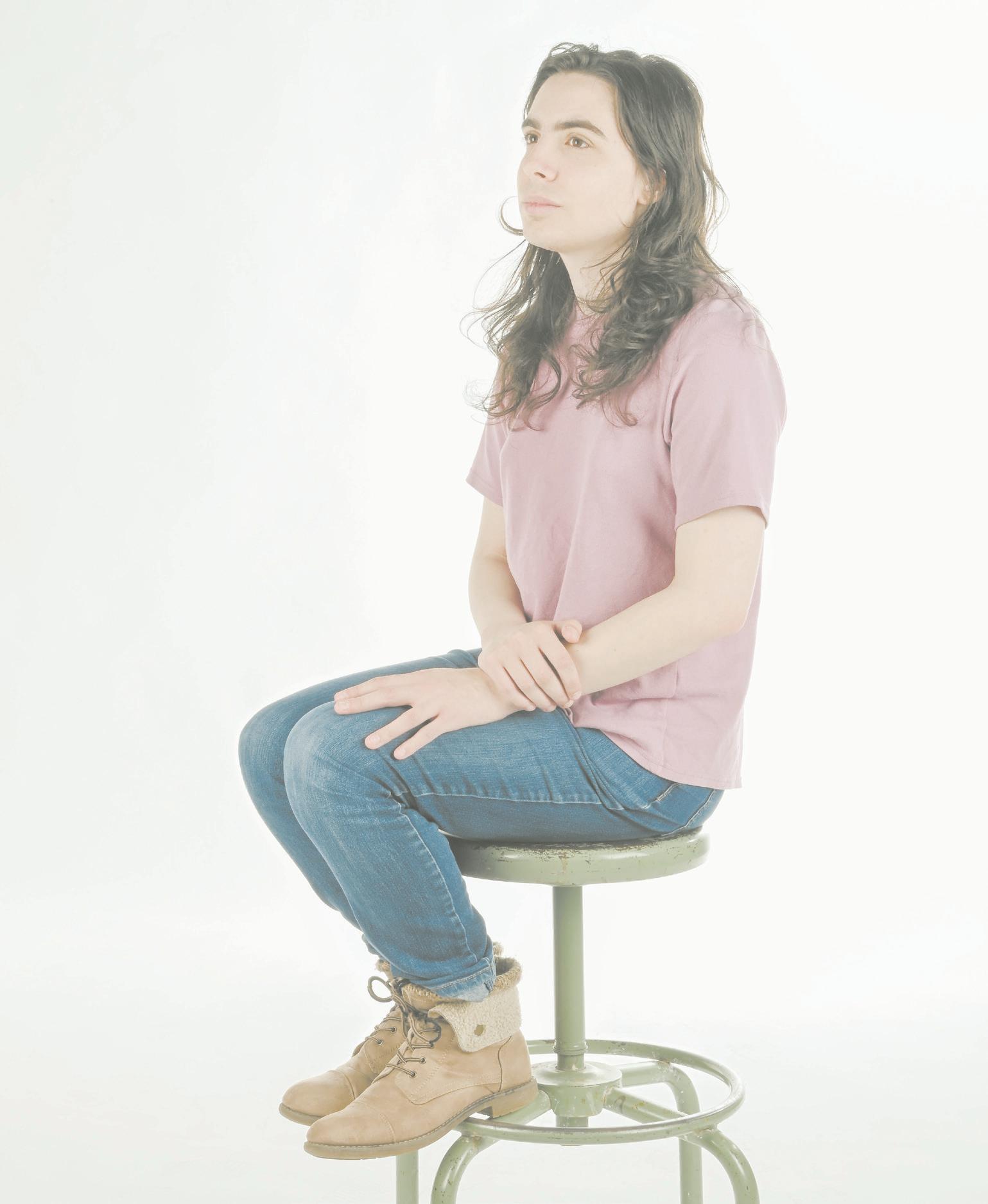

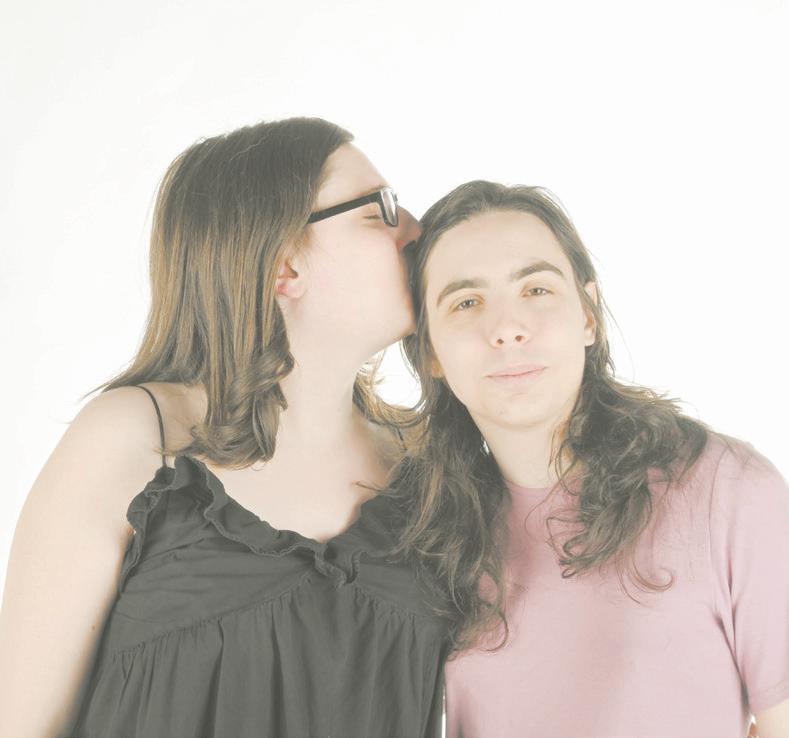
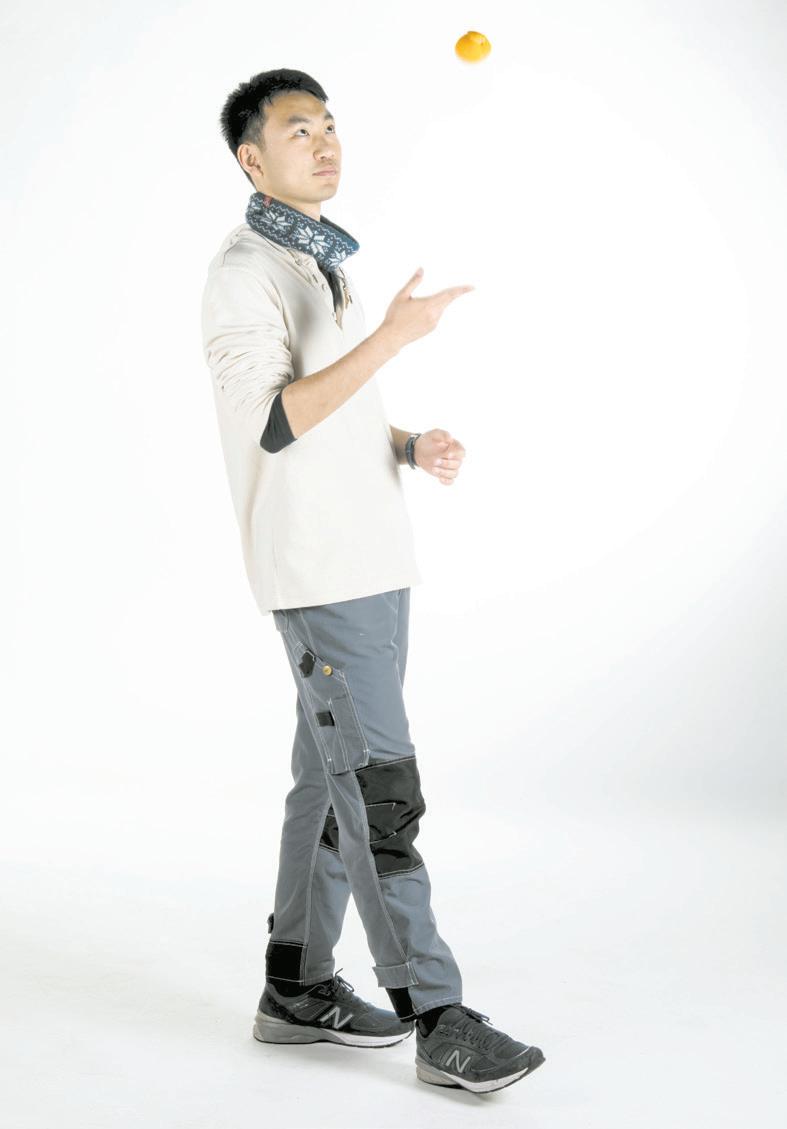



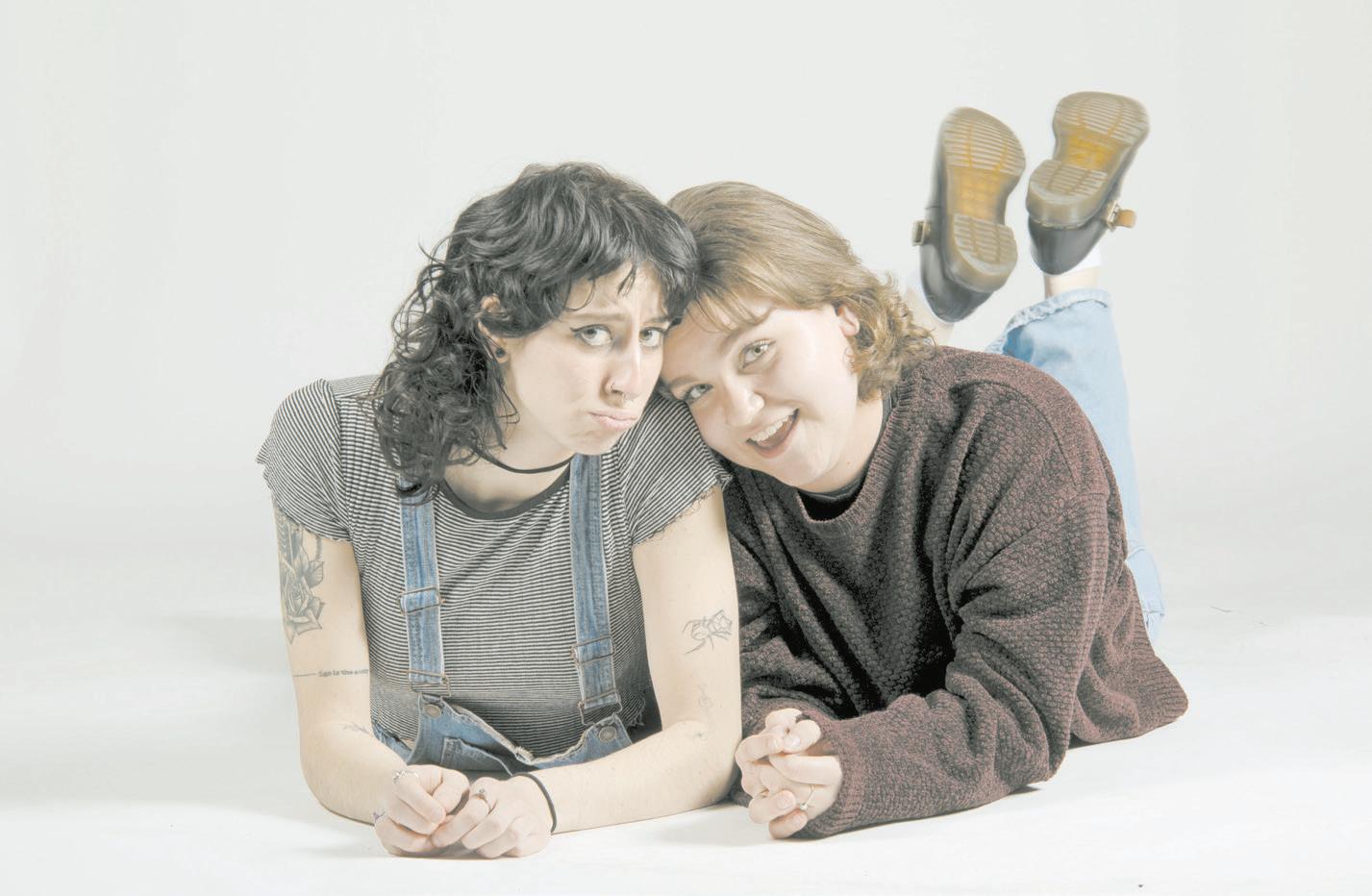
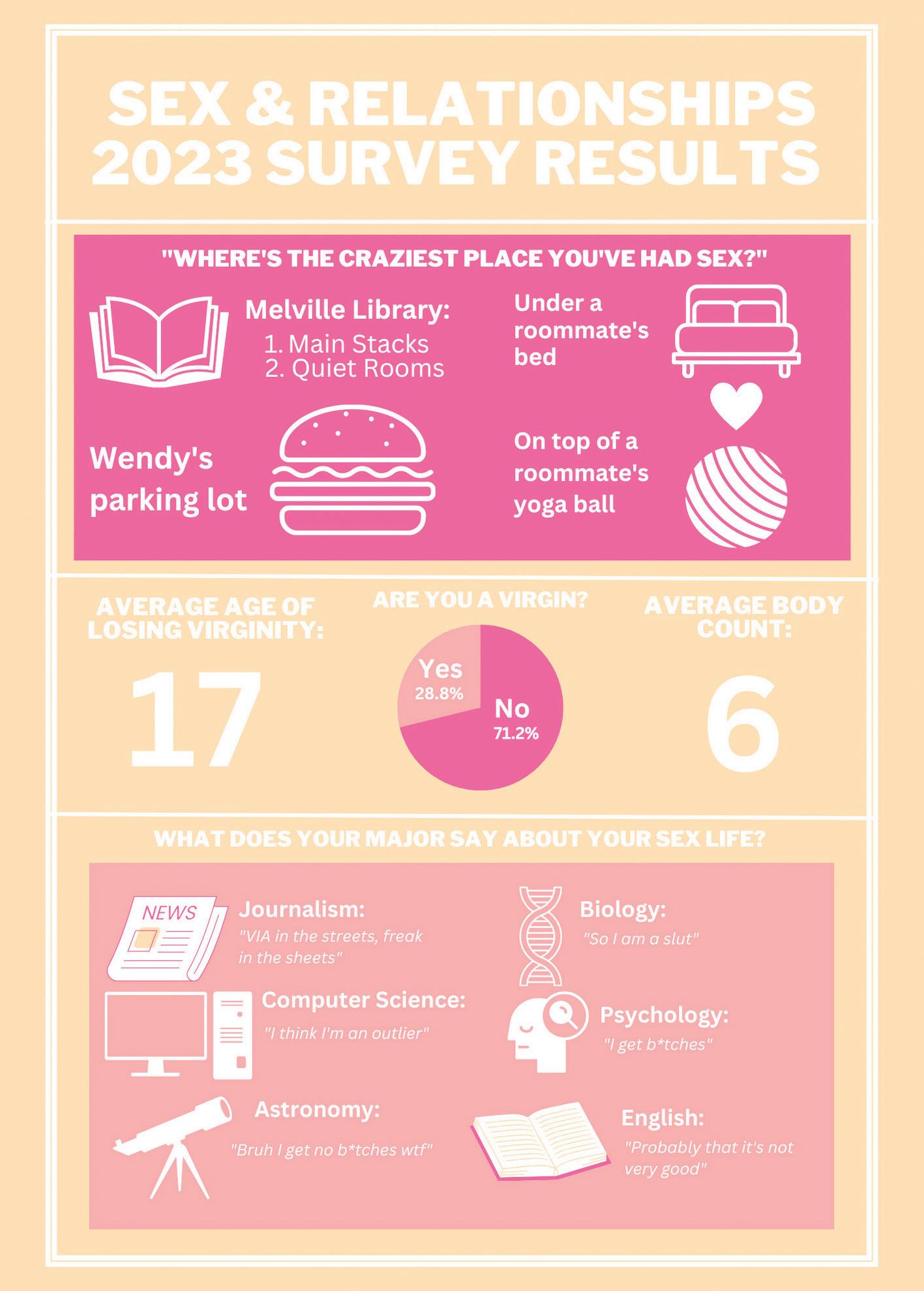
Ahead of the 2023 “Sex and Relationships” special issue, three Stony Brook students reflected on the Catholic education they received before transitioning to the public school system. A common theme: sexual exploration before marriage was strictly prohibited, and the students felt that educators were willing to guilt them into compliance.
Maria Lynders:
I was taught that sex before marriage was a sin before I even knew what sex was. I went to a small private catholic school in Madison, Conn. from kindergarten through eighth grade.
In fifth grade, all of the girls were pulled into a private room by our school nurse and given a talk about menstruation. I remember a brief and vague description of the “birds and the bees” — but only after marriage. The only contraceptive we learned about was abstinence.

In seventh grade during homeroom, each of the girls in my class was given a small, squishy fetus doll. It fit in the palm of my hand, curled up like a sleeping, miniature flesh-like baby. I remember thinking how small its hands looked compared to mine and how far its forehead protruded. My teacher, an extremist pro-lifer, told us to look at the baby in our hand and picture it growing inside us. She then asked us — “would you kill your baby?”
In eighth grade, the week before graduation, my class of 22 students was once again split up by gender into private rooms. It was during a practice graduation recital at our church, and the boys were pulled aside by our priest into a chapel room alone. They told us later that the priest sat them down and talked about how masturbation was a sin, and if they were to give in, to come to him to confess.
At the same time, us girls were in the adjacent room, anxiously sitting around a conference table. We listened wide-eyed while our teacher told us a story about her niece aborting her college pregnancy and regretting it for the rest of her life. She then proceeded to give us pamphlets to protest outside of abortion centers.
According to data from the National Catholic Educational Association, enrollment in U.S. Catholic schools for the 2022-23 school year has reached 1.6 million students in 5,920 schools. The lack of education about
sex and the blatant agenda to guilt students into an outdated and biased mindset about masturbation, abortion and sexuality is dangerous and needs to stop.
While I understand that attending Catholic school comes with certain ideals promoted, it is the responsibility of the faculty to educate and realistically prepare students to understand safe sex and consent.
Anya Marquardt:
I attended Catholic school in my earlier years, from preschool through second grade. After I switched to public education, I
only option if we want a sexual experience that God would accept.
I remember kids holding back giggles when one boy asked if they could explain the use of condoms to us, and the fire of fury that ensued as a result. We were chastised for believing that we would have a need for such an item — waiting until marriage was our only option, and at that point, was there a need for sexual protection? Evidently not.
Sex education wasn’t on the list of items to be taught during my Catholic education because, well, what did us kids
Sarah Murphy:
The only sex education I received was in fifth grade. I honestly just remember bits and pieces of it. The whole grade was called to our big auditorium, where items such as pads and tampons were passed around — the boys clearly unamused and unaffected by the event.
I attended public school from first grade up until the end of middle school before switching to Catholic high school. Although the school made it mandatory for everyone to take a one-semester health class, we only discussed topics such as date rape and learned how to give CPR. While these are important fields to be educated in and were beneficial to my experience, the health course failed to include anything that pertained to sex education.
The class that did address sex, but not in an educational way, was my theology lecture. We were told that having sex before marriage was a sin, along with any other sexual acts. I understood that the school would project its religious beliefs within its curriculum, but I did not realize that meant that it would negate any real exposure to sex education.
attended religious education once a week until I was 15 years old. There was nothing more frustrating — and boring — than sitting at tiny desks on the top floor of a Catholic school for an hour on Tuesday nights with a dozen other kids who wanted nothing more than to sprint out the door.
Now, about seven years after the end of my religious education, there is one word that I remember being repeated more than any other: “sin.” Sexual attraction was a sin. Sexual thoughts were a sin. And masturbation? Forget about it.
During a retreat required for everyone who wanted to receive confirmation — or were being forced to do so by their parents — we were lectured about abstinence for hours. We sat cross-legged on the gymnasium floor and “listened” as half a dozen adults, including the priest, youth group leader and religious education director demanded we always remember abstinence is our
need to be educated about? We weren’t supposed to be having sex yet, and it wasn’t supposed to be something we did or even thought about.
I was lucky enough to have been taught about safe sex in other aspects of my life, but the thought of the millions of children who haven’t received a proper sexual education makes me shudder.
The phrase that abstinence is “100% effective” is ridiculous. In fact, evidence collected over the past 20 years has overwhelmingly shown that adolescents who attempt to practice abstinence fail to do so, and when they engage in sexual intercourse, often do not use a condom. This in turn leads to a higher rate of unplanned pregnancies and STDs.
Ideals and values are one thing — practicality is an entire other story, and that’s the part that Catholic education is continuously ignoring.
Another topic that was heavily emphasized in our class was abortion. During my senior-year theology class, our teacher saw fit to explain to the class that the United States was more “holy” than other countries such as China, where abortion was common because of the one-child policy. The teacher explained that what China was doing was sinful in the eyes of God. As someone who was adopted from China, hearing his extreme views was quite jarring. I remember an international student in my class raised her hand because it made her deeply uncomfortable. I never viewed the one-child policy as some malicious act, but the way my teacher villainized it in a way to encourage students not to get abortions was unsettling.
The school also hosted a field trip every year to attend pro-life events. I never attended the pro-life marches even though they were heavily advertised as something that was good. I did not agree with what the group stood for, but that was not something I could express outwardly.
It wasn’t until college that I realized how lacking my sex education was. I was angry and felt that my high school had done me a disservice. A well-rounded education was needed, but instead, strict religious ideals were forced.
 Compiled by Katherine Procacci and Maria Lynders
Compiled by Katherine Procacci and Maria Lynders
Historically, on-screen romance hasn’t always represented real life. But in recent years, movies and shows have portrayed relationships that have broken social stereotypes, becoming a bit more realistic. Well, in some cases.
“Call Me by Your Name” is a romantic comingof-age and coming out story between 17-year-old Elio, played by Timothée Chalamet, and 24-yearold Oliver, played by Armie Hammer. Elio is spending the summer of 1983 at his family’s villa in Lombardy, Italy when his father takes on Oliver as an intern. Oliver is also living at the villa with the family, and Elio doesn’t like Oliver very much at first. However, sexual tension grows between the two protagonists over time. They play off their relationship as just a friendship, scared to come out to the family — especially Oliver. At the end of the summer, Oliver leaves, still intent on suppressing his sexuality. But, Elio’s father caught on and encouraged him to be his true self. Elio and Oliver may have not ended up together, but that summer still changed their lives.
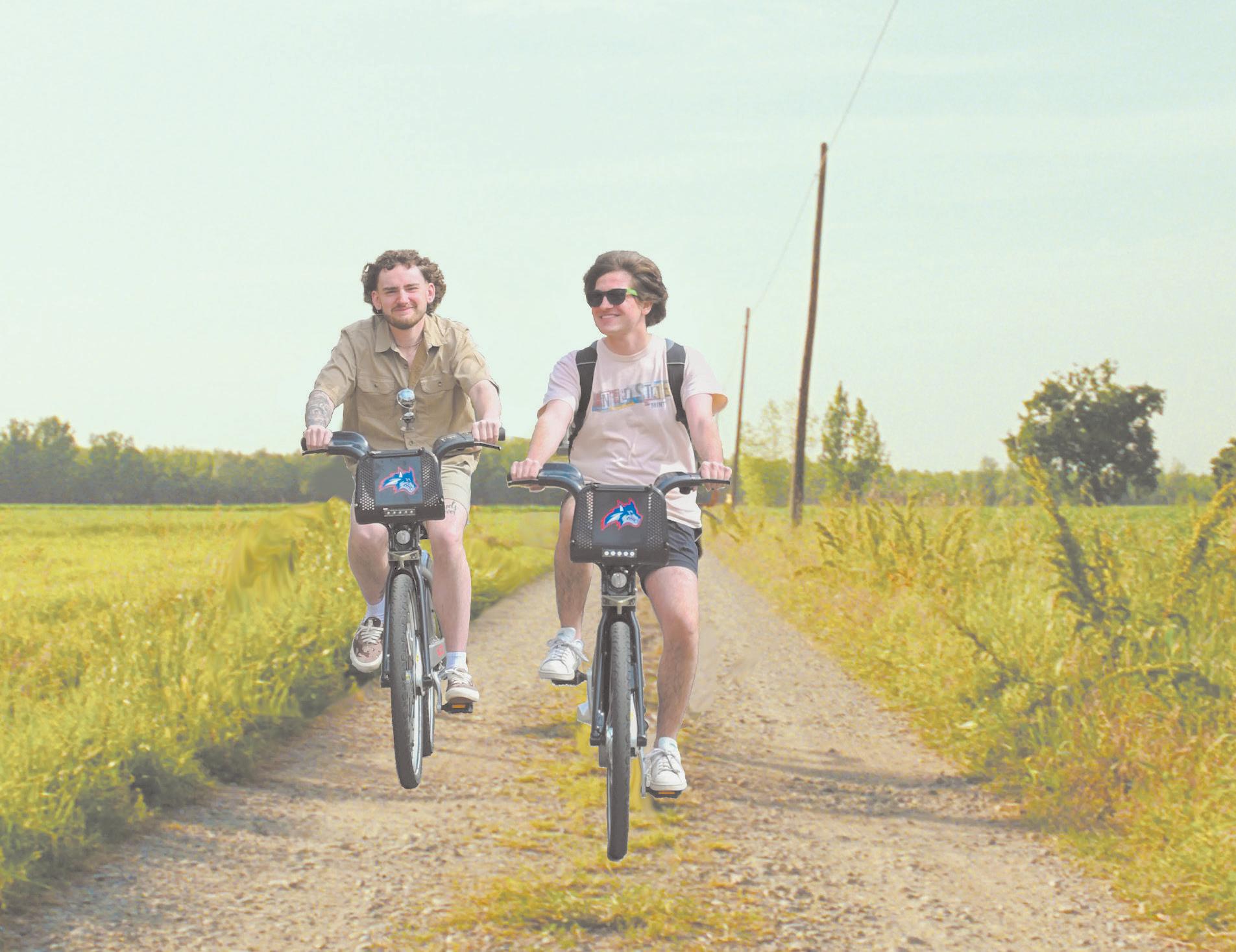
At first glance, “Lars and the Real Girl” might seem more than bizarre. Ryan Gosling plays Lars, an extremely shy, socially awkward man who begins a delusional relationship with a life-size plastic sex doll he purchased off the internet. However, don’t let this unconventional relationship deter you; Lars does not use the doll for sex, but as a way to connect with and love someone. His psychologist advises his family and the town to go along with his delusion and accept the doll “Bianca” as his girlfriend. Over time the community grows to see Bianca as more than a doll, and as someone they too love. This movie is one of the most heartwarming and deeply insightful portrayals of loneliness, love and empathy.
“You know nothing Jon Snow.” While Jon Snow’s first love interest, Ygritte, said this, it turns out to be true in his future relationships. Jon later gets tangled in a romance with Daeynerys Targaryan, the “Mother of Dragons,” who, little did he know, is his aunt. The incest in this award-winning television show is no secret, being that two of the main characters are fraternal twins in a love affair. While fans did not necessarily get behind Cersei and Jaime Lannister sleeping together, it was hard not to root for Jon and Daenerys. In true “Game of Thrones” fashion, their love story ends with Jon killing Daenerys for the greater good after she burnt Westeros to the ground. To say they broke relationship stereotypes is an understatement.
In today’s world, technology is becoming increasingly intertwined with our lives and emotions. With ChatGPT’s rising popularity, more concerns are being raised regarding whether artificial intelligence will ever reach a sentient level, meaning it can perceive or feel things as a human would. The 2007 film “Her” follows an unconventional romance where Theo, damaged after his marriage falls apart, falls in love with “Samantha,” his computer’s artificial intelligence operating system. Samantha, while filing data on Theo, learns what it’s like to be human, while Theo gets lost further into the world of technology. His love for Samantha is an eerie portrayal of a future where humans choose machines over connections with other people.
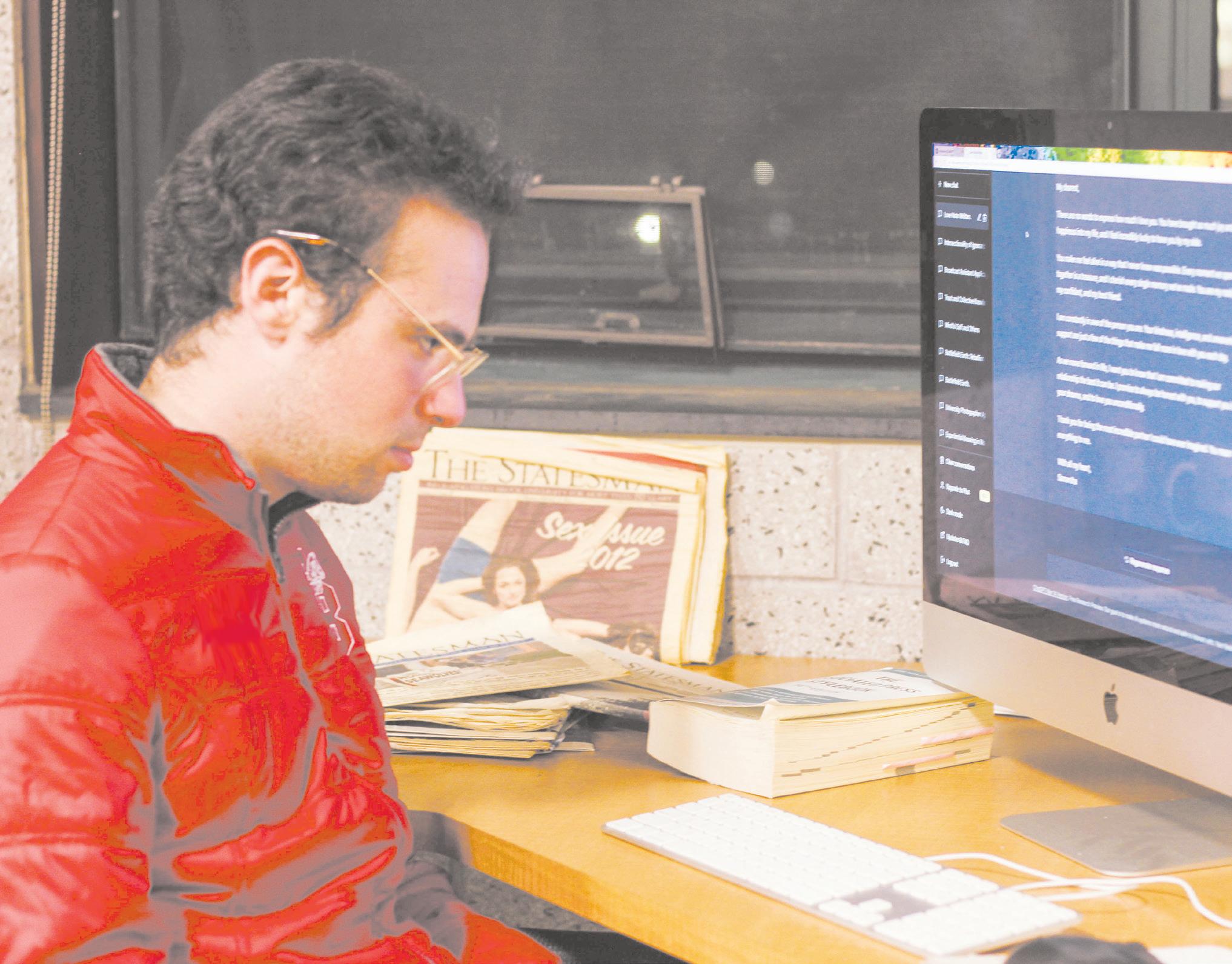
Jim Carrey and Kate Winslet star as Joel and Clementine, an emotionally distant man and an unstable, free-spirited woman, in this sci-fi film about the end of a two-year relationship. After an unpleasant breakup, Clementine erased Joel and their relationship from her memory. When Joel finds out, he goes to do the same but while unconscious, he realizes he does not want to get rid of his memories of Clementine. He spends the film trying to preserve the memories and resisting the procedure by hiding in his brain. At the end, Joel and Clementine meet for the “first time” again, unaware of who they are to each other. Their attraction to each other remains, but then they receive the tapes of them going through the procedure. Despite their flaws, they decide to give it a try again. This is a story about overcoming differences for love.
“Silver Linings Playbook” may follow a conventional romance trope where a boy loses a girl, tries to win her back and ends up falling for someone else, but the film itself is far from an ordinary love story. The movie earned praise for destigmatizing and normalizing discussion about mental health and how relationships with family and partners can be affected from it. Bradley Cooper, playing Patrick Solitano, is being treated for bipolar disorder while Jennifer Lawrence, as Tiffany Maxwell, has depressive episodes and suffered from a sex addiction after her husband died. Many movies use mental illness as a plot device for other characters to learn from or solve, but this movie shows mental illness as it is and how it interacts when two characters fall in love.

Editor-in-Chief.................Jeremy Portnoy
Managing Editor.......Katherine Procacci
Managing Editor.................Viola Flowers
Managing Editor...............Maria Lynders
News Editor.....................................................Lori Saxena
Sports Editor.............................................Mike Anderson
Opinions Editor......................................Christine Kelley
Multimedia Editor....................................Tim Giorlando
Copy Chief.......................................................Skylar Sena
Audience Engagement................................Alissa Pabon
Asst. News Editor.....................................Sonya Gugliara
Asst. Arts & Culture Editor..........................Jenna Zaza
Asst. Sports Editor.......................................Matt Howlin
Asst. Sports Editor...................................Kenny Spurrell
Asst. Opinions Editor............................Anya Marquardt
Asst. Opinions Editor..................................Sara McGiff
Asst. Multimedia Editor..........................Brittney Dietz
Asst. Multimedia Editor...........................Camron Wang
Asst. Copy Editor...........................................Olivia Erndl
Asst. Copy Editor..................................Alyssa Pascocello
Asst. Audience Engagement McKenzie Post
To contact the Editor-in-Chief and Managing Editors about organizational comments, questions, suggestions, corrections or photo permission, email editors@sbstatesman.com.
The Statesman is a student-run, student-written incorporated publication at Stony Brook University in New York. The paper was founded as The Sucolian in 1957 at Oyster Bay, the original site of Stony Brook University. In 1975, The Statesman was incorporated as a not-for-profit, student-run organization. Its editorial board, writers and multimedia staff are all student volunteers.
The Statesman and its editors have won several awards for student journalism and several past editors have gone on to enjoy distinguished careers in the field of journalism.
Disclaimer: Views expressed in columns or in the Letters and Opinions section are those of the author and not necessarily those of The Statesman
For more Statesman content, visit us at sbstatesman.com and follow us on Twitter and Instagram @sbstatesman.
Want to set the mood? Scan the QR code to listen to the full playlist.


Food. Diverse in its ability to create, share and savor. Food is romance served on a platter for us to share with those we love, or for us to show love to ourselves. So, for our “Sex and Relationships” special issue, we asked The Statesman editors their take on the “sexiest foods.” Below is a non-exhaustive list of our top 10 favorites.
1. Chocolate-covered Strawberries
A classic delicacy. The sound of the smooth chocolate shell cracking to reveal a beautiful, juicy burst of flavor. Chocolatecovered strawberries are the pinnacle of sex, romance and pleasure. They’re a staple of Valentine’s Day, easily the first dessert you see one lover feed another. There was no other perfect choice to top our list of sexiest foods.
2. Red Wine
Cabernet. Pinot Noir. Merlot. Red wine is the epitome of sophistication, fittingly
paired with a candlelight dinner or night in bed with a partner. It’s no wonder that red wine works as a natural lipstick — it’s a classic for any romantic excursion.
3. Sushi

Creamy. Crunchy. Umami. Its small circular shape, picked up with a pair of chopsticks, or just your fingers, creates an intimate aura. Perfect to share with another, perfect to eat on any romantic occasion … and off anything.
4. Biscuits and Gravy
A southern delicacy. A smooth, buttery bread paired with thick, flavorful white sauce. The juxtaposition of flavor and texture makes for a classic morning-after food.
5. Oysters
An oyster’s slick, smooth texture oozes sensuality unlike any other substance. Oysters are an aphrodisiac: a family of substances claiming to increase sexual instinct,
behavior and pleasure. Aptly named after Aphrodite, the goddess of love, aphrodisiacs also include pomegranates, honey, dark chocolate and coffee.
6. Cherries
Pull off the stem. Pop it in your mouth. Take a bite and let the tangy, sweet taste pleasure your tongue. Allow yourself to reveal the pit, the core of the experience. Spit it out or swallow — your choice.
7. York Peppermint Patties
Dark chocolate and peppermint: a match made in heaven. A chocolate shell covering soft, creamy peppermint, creating a tingling sensation in the mouth and releasing a feeling of pure euphoria. They’re the ideal snack to throw in the freezer and enjoy at night, whether it be alone in front of the television or shared with a lover.
8. Clementines
Peel back the thick, textured layers. Reveal
the flesh and pulp that awaits you. Pull it apart, and pop a piece in your mouth. Feel the tangy, citrus flavor envelop your tastebuds. Clementines make you do the work, but in the end, isn’t that moment of surprise when you reach the climax worth it?
9. Whipped Cream
Fluffy. Light. Voluptuous. Perfect on any dessert, from a warm apple pie to a cold ice cream cone. Perfect to stick your tongue in. Perfect to scoop up with your finger and swipe across your partner. Simply put, the perfect addition to any romantic endeavor.
10. Fettuccine Alfredo
Thick, creamy and flavorful. A staple Italian dish, seeped in romanticism. Exquisite for sharing an intimate moment with another over a candlelit dinner. While heavy in nature, it’s the best way to get a romantic night started, or bring it to the next level.
